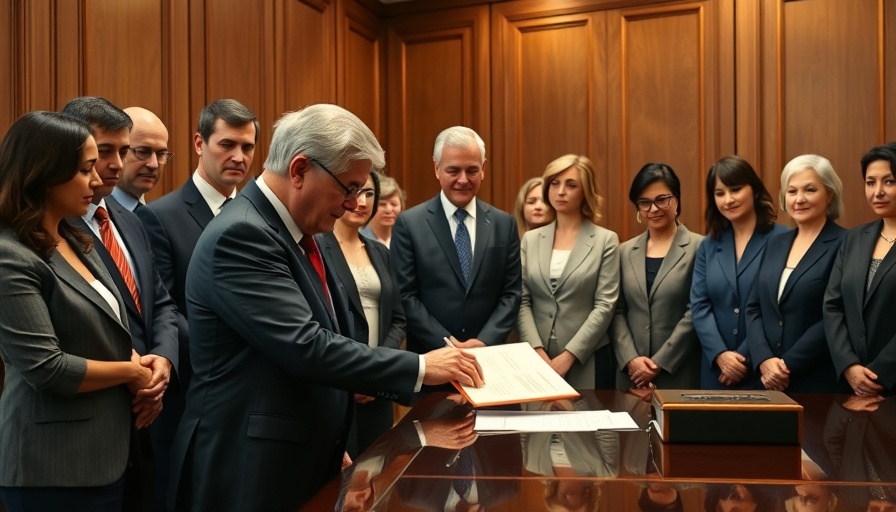
The Significance of Class VI Well Primacy in West Virginia
On February 18, 2025, U.S. Environmental Protection Agency (EPA) Administrator Lee Zeldin signed a final rule that grants West Virginia primary authority to regulate Class VI wells under the Safe Drinking Water Act. This designation is significant as it allows the state to oversee the injection of carbon dioxide (CO2) into deep rock formations—a critical component for carbon capture and storage (CCS) technology. West Virginia has become the fourth state in the nation to achieve this primacy, a move that signifies not only a local regulatory achievement but also an advancement in the larger narrative of energy independence and environmental stewardship in the United States.
Impacts on Solar Energy and Green Business
The approval of Class VI primacy aligns with a broader trend towards sustainable energy practices, particularly in the wake of increasing focus on reducing greenhouse gas emissions. This regulatory shift is not only vital for the fossil fuel sector but also creates new avenues for companies investing in solar and green energy to collaborate with industries that benefit from CCS. For solar businesses, understanding the implications of carbon capture technologies can offer new growth opportunities, as industries increasingly seek to lower their carbon footprint. Combining renewable energy production with advanced carbon management helps to create more sustainable energy ecosystems.
A New Era for West Virginia’s Energy Sector
Governor Patrick Morrisey, advocating for the state’s energy policies, pointed out that this new authority enables West Virginia to spearhead initiatives for job creation and investment in energy, manufacturing, and petrochemical sectors. It opens pathways for integrating renewable resources like solar energy with traditional industries, making way for innovative solutions in energy production that could further enhance regional economic stability. Adding CCS efforts to existing energy frameworks may be particularly appealing to those homeowners and businesses keen on embracing environmentally responsible energy options.
The Broader Implications of Carbon Capture Technology
Carbon capture and storage technology have far-reaching implications beyond West Virginia’s borders, influencing how the nation approaches energy independence. The transformative nature of CCS can be leveraged to enhance both coal and renewable energy sectors, allowing for a harmonious coexistence of old and new energy paradigms. This multi-faceted approach could help mitigate the challenges facing homeowners and businesses interested in sustainable energy solutions.
Future Predictions for Renewable Energy and Regulations
As more states likely follow West Virginia’s lead in obtaining Class VI primacy, we can anticipate an increase in investments directed towards carbon management technologies. This regulatory advancement signifies a shift towards innovative energy solutions that not only focus on harnessing energy but also on responsibly managing emissions. Homeowners and businesses can expect more incentives and support systems to emerge that will catalyze the growth of green energy initiatives.
Practical Insights for Homeowners and Businesses
Homeowners and businesses interested in solar and green energy should be aware of developments in regulations like Class VI primacy, as they will shape the future landscape of energy options. Staying informed about these regulatory changes allows for better strategic planning in resource allocation and investment in renewable energy technologies. Additionally, businesses stand to benefit from engaging with CCS technologies which may become essential for meeting both legal requirements and environmental commitments.
Conclusion: Embracing the Future of Energy
West Virginia's achievement in Class VI well primacy represents a landmark moment not just for the state, but also for the evolution of the American energy landscape. It underscores the importance of a cooperative federal approach to energy management that empowers states to lead while supporting environmental integrity. Homeowners and businesses can take proactive steps towards engaging with these energy advancements, harnessing the benefits of strategic investment in sustainable technologies as they align with environmental goals.
In light of these developments, we encourage readers to consider the integration of renewable energy solutions into their own practices and explore the potential benefits of engaging with carbon capture technologies as part of their energy strategy.
 Add Row
Add Row  Add
Add 



Write A Comment